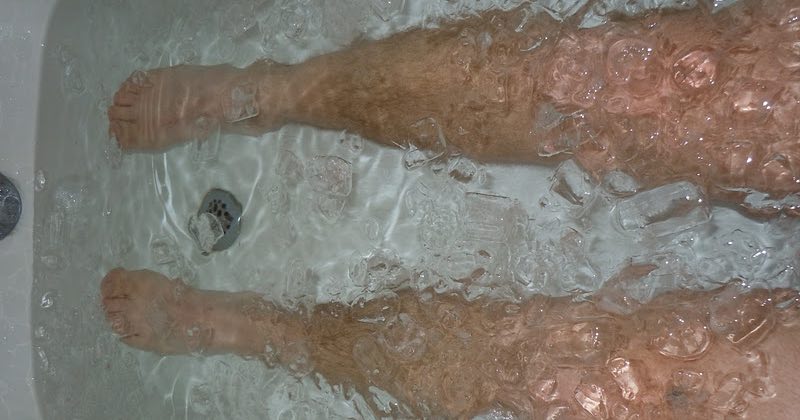Cold Water Immersion Therapy For Full And FAST Recovery From Injury And Muscle Soreness
Last updated on
Are your muscles stiff and sore because of too much exercise, athletic activities, or strenuous household chores? Oftentimes, your muscles don’t start feeling painful until after a couple of days. This uncomfortable feeling is called delayed-onset muscle soreness (DOMS).
Instead of taking potentially harmful painkillers to get rid of the soreness, Dr. Joseph Mercola recommends a more effective alternative: cold water immersion or cryotherapy. This technique, used by both amateur and professional athletes, helps reduce muscle pain and inflammation after exercise and speeds recovery time.

Can A Cold Water Bath Really Soothe Sore Muscles?
Researchers from the University of Ulster’s Health and Rehabilitation Sciences department in Country Antrim, North Ireland recently conducted a study on cold water immersion and found out that it does relieve sore muscles.
The researchers analyzed 17 trials involving more than 360 people who either immersed or rested in cold water after doing cycling, running, or resistance training. They found that cold-water baths were much more effective in relieving sore muscles one to four days after exercise.
Dr. Mercola explains: “Cold water works by lowering the damaged tissue’s temperature and locally constricting blood vessels. Using cold therapy immediately after an injury helps prevent bruising and swelling from the waste and fluid buildup. Cold also helps numb nerve endings, providing you with instant, localized pain relief.”
Most of the studies used water with a temperature between 10 to 15 degrees Celsius (50 to 59 degrees Fahrenheit). The participants stayed in the cold bath for about 24 minutes.
However, there are some trials that used lower temperatures and “contrast immersion” – where cold and warm water were used alternately. This did not show a significant benefit, though.
“Most studies on cold water immersion report no or minimal side effects, so if you’re willing to spend 20 minutes or so in a cold tub of water, you may very well find some relief,” says Dr. Mercola.
Tips For Cold Water Immersion Therapy
Immersing yourself in cold water can be quite shocking, especially if you’re a first-timer. You need to make sure that the water is not too cold and that you do not immerse yourself too long.
If full-body cryotherapy seems too much for you, Dr. Mercola recommends a more targeted approach, such as simply applying a cold pack to a specific part of your body. This is very useful for an injury or pulled muscle, although it may not efficiently give full-body relief from muscle soreness.
The best time to use cold treatment is during the first 48 to 72 hours. Apply it in 20-minute intervals to minimize any potential damage. Another tip when using ice: always use a cloth or towel wrap to protect your skin from the intense cold.
You can also use a gel pack in place of ice. A gel pack is convenient and easy to use, but make sure it does not contain any toxic chemicals that may leak out.
Other Useful Remedies For Sore Muscles
Before, muscle soreness was traditionally blamed on lactic acid buildup. But since lactic acid does not remain in your muscles for a long time, it is probably not the primary cause of DOMS. Steady Health states other possible causes of DOMS, such as:
- Microscopic tears in the muscle fiber
- Chemical irritants released by the damaged muscles that activate pain receptors
- Inflammation of damaged muscles
- Changes in osmotic pressure, muscle spasms, and a change in the way calcium is regulated by your muscle cells
“The best strategies to help reduce muscle fatigue and soreness, whether you’re a professional athlete or not, are those that will help to address some of these underlying causes,” Dr. Mercola advises. He recommends these techniques:
- Add foods with naturally-occurring carnosine in your diet. Carnosine is a pluripotent dipeptide that is found in your muscles. It is composed of two amino acids, beta-alanine and histadine. Carnosine buffers acids in your muscles, works as a potent antioxidant, and may help quell muscle inflammation. You can get carnosine from animal protein sources, such as organic free-range chicken or grass-fed beef. Eggs and whey protein are also good choices.
- Take a beta-alanine supplement.“Beta-alanine has also been shown to be helpful for preventing muscle soreness when working out,” says Dr. Mercola.
- Try Whole Body Vibrational Training (WBVT). Also called acceleration training, this exercise routine uses a Power Plate machine and works by stimulating your white muscle fibers, or your fast- and super-fast muscle fibers. The Power Plate prompts your pituitary gland to produce more growth hormone (HGH), which helps you accelerate tissue healing, build lean body mass, and burn fat.
- Eat ginger. It has anti-inflammatory compounds and oils called gingerols, which may effectively relieve pain. A study that involved people who performed muscle pain-inducing exercises revealed that subjects who ate two grams of ginger a day reduced their muscle by 25 percent 24 hours after the workout
This article was originally published on DrMercola.com. It is republished here with permission.
Some of the links I post on this site are affiliate links. If you go through them to make a purchase, I will earn a small commission (at no additional cost to you). However, note that I’m recommending these products because of their quality and that I have good experience using them, not because of the commission to be made.

































 JOIN OVER
JOIN OVER
Comments